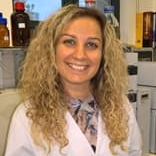Steroidal and Triterpenoid Compounds: Natural Sources, Bioactivities and Applications
A special issue of Molecules (ISSN 1420-3049). This special issue belongs to the section "Natural Products Chemistry".
Deadline for manuscript submissions: closed (29 February 2024) | Viewed by 19511
Special Issue Editors
Interests: bioactive compounds; food chemistry; phenolic compounds; chromatography; mass spectrometry
Special Issues, Collections and Topics in MDPI journals
Interests: food chemistry; bio-based ingredients; antioxidants; extraction methods; process optimization
Special Issues, Collections and Topics in MDPI journals
Interests: natural bioactive compounds; medicinal chemistry; bioactivity and toxicology; functional applications
Special Issues, Collections and Topics in MDPI journals
Special Issue Information
Dear Colleagues,
Steroidal and triterpenoid compounds are widely distributed in nature and have been applied in many ways in different sectors. Steroids are solid alcohols with a basic skeleton typically composed of 17 carbons arranged in the form of a perhydrocyclopentanophenanthrene. They have great structural variation and comprise compounds responsible for important biological functions. In turn, triterpenoids display a 30-carbon skeleton with relatively complex cyclic structures, most of which are alcohols, aldehydes, or carboxylic acids. There are also saponins, glycosides of both steroidal and triterpenoid compounds, characterized by their strong foam-forming and surfactant properties in aqueous solution, which can be found in a wide variety of edible and medicinal plants. It is also worth noting the existence of steroidal alkaloids, mainly in Solanaceae plants, brassinosteroids, first isolated in pollen grains of Brassica napus L., and physalins, steroidal constituents of Physalis plants, among many other related bioactive metabolites.
This Special Issue will provide an update on all aspects of the chemistry and bioactivity of steroidal and triterpenoid compounds, bringing together original research and review articles covering the latest findings on natural sources, bioactive and pharmacological properties, and recent applications of these molecules that have been receiving increasing interest in different industrial sectors. Studies focused on extraction, isolation, characterization, and mechanisms of action, among other research subjects, are also welcome.
Dr. Maria Inês Dias
Dr. José Pinela
Dr. Lillian Barros
Guest Editors
Manuscript Submission Information
Manuscripts should be submitted online at www.mdpi.com by registering and logging in to this website. Once you are registered, click here to go to the submission form. Manuscripts can be submitted until the deadline. All submissions that pass pre-check are peer-reviewed. Accepted papers will be published continuously in the journal (as soon as accepted) and will be listed together on the special issue website. Research articles, review articles as well as short communications are invited. For planned papers, a title and short abstract (about 100 words) can be sent to the Editorial Office for announcement on this website.
Submitted manuscripts should not have been published previously, nor be under consideration for publication elsewhere (except conference proceedings papers). All manuscripts are thoroughly refereed through a single-blind peer-review process. A guide for authors and other relevant information for submission of manuscripts is available on the Instructions for Authors page. Molecules is an international peer-reviewed open access semimonthly journal published by MDPI.
Please visit the Instructions for Authors page before submitting a manuscript. The Article Processing Charge (APC) for publication in this open access journal is 2700 CHF (Swiss Francs). Submitted papers should be well formatted and use good English. Authors may use MDPI's English editing service prior to publication or during author revisions.
Keywords
- Steroids and steroidal compounds
- Triterpenoids
- Saponins
- Biological activities
- Medical applications
- Food applications
- Drug discovery
- Vitamin D
- Metabolism
- Mechanisms of action








